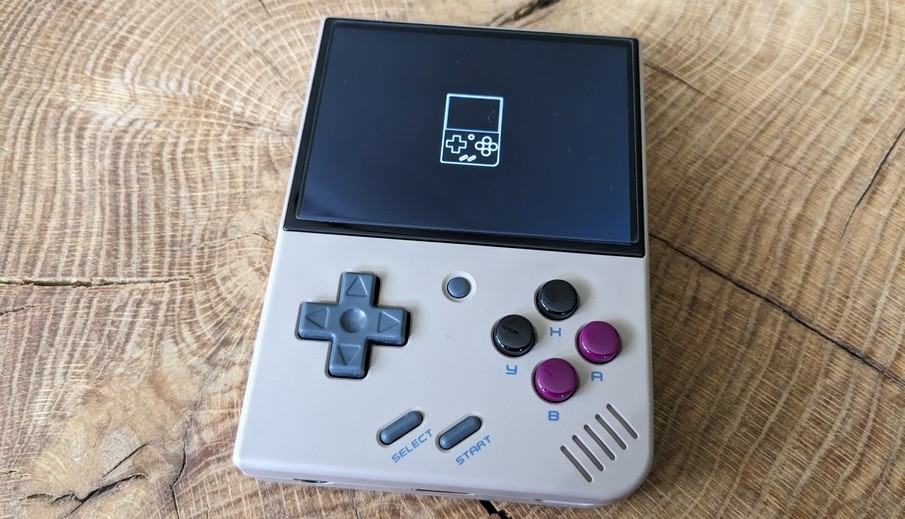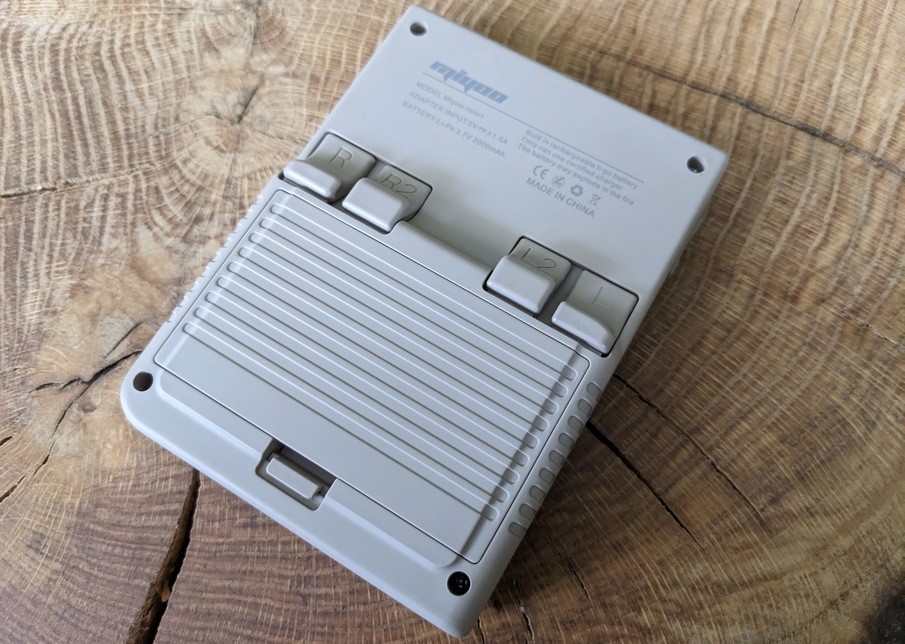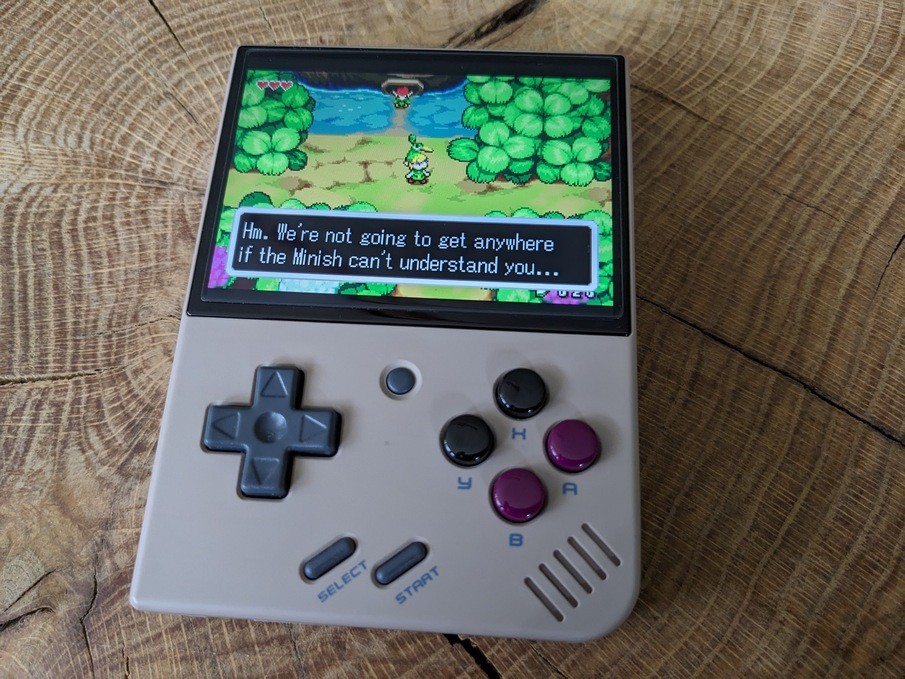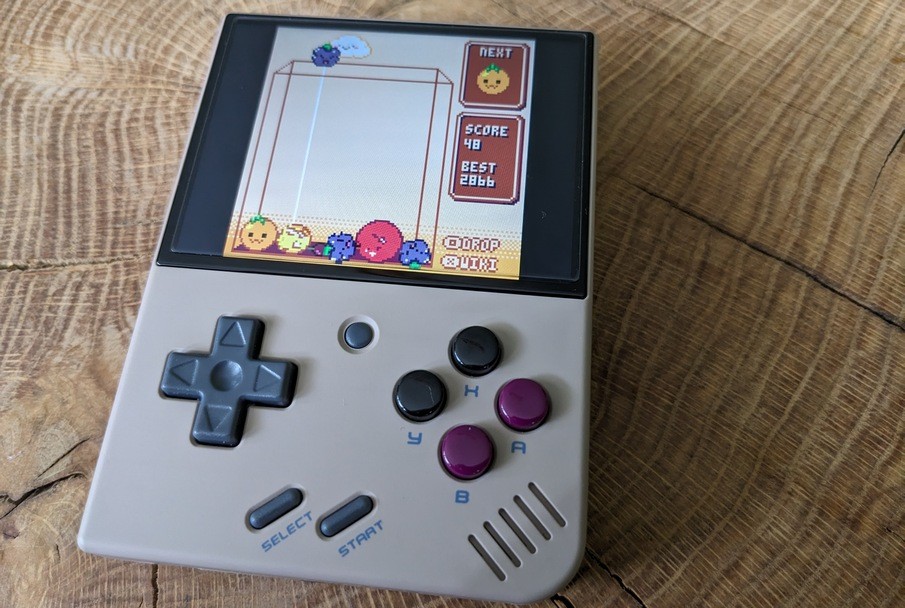Howdy motherf… dear readers of this wonderful blog. Sometimes I spend money on things that waste my time. I hate doing this, I mean, buying consoles to play games and then realizing that I do nothing but play games for weeks on end. But what the heck, after all, you have to relax sometimes, better this kind of entertainment than partying and waking up hungover. I don’t think I can afford any more damaged grey matter. So, I’ve bought myself a new Miyoo Mini Plus console. Regular readers may remember that I bought a PocketGo around 2020. This is something similar, but with a more up-to-date system and a GameBoy-like design. Of course, being an Aliexpress addict, I bought it there myself. The official system loaded on this console is probably an older and modified version of OnionOS. Anyway, I backed up anyway as usual and uploaded everything in my own way. The process is not complicated, but since I spent a day on this, I would like to share my observations and the material I collected. This is not some kind of review or guide, rather a collection of useful information for anyone who owns a Miyoo Mini Plus or is planning to buy one.

With Black Friday and then Christmas fast approaching, perhaps one of you will decide to buy this console as a gift for someone or yourself. If you are looking for other interesting gift ideas for the IT people, I suggest you to take a look at today’s updated article Hacker Gadgets.

The Miyoo Mini Plus is the successor to the Miyoo Mini. These consoles only differ in size and therefore in screen size. The Miyoo Mini (i.e. version 1) had a screen size of 2.8 inches. The Miyoo Mini Plus (v2) is a slightly larger console with a 3.5 inch screen. If you have large hands, the larger will be easier to use. The new console was released mainly because the manufacturer had problems with the supply and availability of 2.8-inch screens in general. As a result, the first version is no longer available for sale. Of course you can still get one on Ebay or Aliexpress, but these tend to be the last ones, or used ones.
Here is a size comparison courtesy of Reddit user. From left: Anbernic Rg Nano, Miyoo Mini, Miyoo Mini+ and Anbernic 35xx.

If you decide to buy the Mini Plus, also buy an extra micro SD card as the one that comes with the console is some cheap shitty one. I use Lexar, but you can use any with a brand name on it like Kingston, Samsung or SanDisk. Depending on how many games you want to put on it, buy right size. If you want to have a big collection of PS1 games, get a bigger card like 128 or 265 GB. For GB, GBA, Arcade, SNES, NES or whatever old games 64 GB is ok. Original card will be full of roms, so you can keep it and after updating your console system, copy them back to proper folders.

Now a bunch of useful links.
Official website: https://www.lomiyoo.com/en/index.html where you can download lates firmware.
Official shop: https://miyoominiv2.com/, where you can buy the console.
Reddit: https://www.reddit.com/r/MiyooMini/, great Miyoo community.
Mods: https://www.etsy.com/shop/SakuraRetroModding, if you want to customize the look of your console.
Buttons: https://www.etsy.com/shop/GetBetterButtons, or add coloured buttons.
GitHub general repo: https://github.com/MiyooMini, for more links and tools.
Themes: https://github.com/OnionUI/Themes/blob/main/README.md, to select a theme other than the default one.
Custom frontend Koriki: https://github.com/Rparadise-Team/Koriki
Custom frontend DotUI: https://github.com/Xpndable/DotUI
Custom frontend DotUI-X: https://github.com/anzz1/DotUI-X
Custom frontend MinUI: https://github.com/shauninman/MinUIMedia
Media player: https://github.com/TechDevangelist/gmu, you can use console as music player, or even Spotify ;)
Translations: https://github.com/MiyooMini/language-pack, for languages ither than English.
Resources: https://github.com/anzz1/miyoomini-resources, lots of other links and firmwares.
OnionOS: https://onionui.github.io/ and it GitHub repo: https://github.com/OnionUI/Onion + Docs https://onionui.github.io/docs, these 3 links are probably all you need to go deeper with knowledge about console, system, updates and apps.
RetroArch: https://github.com/OnionUI/RetroArch, cross-platform, sophisticated frontend for the libretro API. It is already implemented in Onion OS.
Ports: https://github.com/OnionUI/Ports-Collection, ports of popular games.
AlliumOS: https://github.com/goweiwen/Allium, alternative to OnionOS.
Pico-8 integration: https://github.com/jtothebell/fake-08, Pico 8 emulator.
Pico 8 player: https://www.lexaloffle.com/pico-8.php + Carts (choose on, and on the cart page right click on
 and save it as a file with *.p8.png extension. Copy the cart to the memory card and you can play Pico-8 games on the Miyoo Mini Plus.
and save it as a file with *.p8.png extension. Copy the cart to the memory card and you can play Pico-8 games on the Miyoo Mini Plus.Onion Desktop Tool: https://github.com/schmurtzm/Onion-Desktop-Tools/, helps to format the card and install the system using a GUI.
Godhand Miyoo Set: https://archive.org/details/godhand-miyoo-set, free game pack.
Tiny Best Set: GO! https://archive.org/details/tiny-best-set-go and tutorial http://miyooguide.fireblend.com/, another game pack.
LogoTewak: https://github.com/schmurtzm/Miyoo-Mini-easy-logotweak, if you want to change the boot screen.
ThemeViewer: https://github.com/syphen/onion-theme-viewer, theme viewer and editor.
Retro Bioses: https://github.com/Abdess/retroarch_system, bioses for consoles you want to emulate.
Websites where you can download more games/roms: EmulatoGames, Romsgames, RomsFun, EmuParadise.
NDS Emulator (DraStic) for Miyoo Mini (Plus): https://github.com/steward-fu/nds_miyoo
![]()
With a clean new card follow the official Onion OS installation tutorial. It is really easy. You can also try custom frontends or even other OSes like AlliumOS. TBH, just go link by link from the list above and see what you find useful.
For me all the games and emulators work great, the Onion OS guys have done a great job configuring the console and emulators is easy and the documentation is done professionally, you will find everything you need to know there. The console itself is much cooler than PocketGo.
Thanks to Miyoo Mini Plus I found Pico 8 Fantasy Console.
PICO-8 is a fantasy console for making, sharing and playing tiny games and other computer programs. It feels like a regular console, but runs on Windows / Mac / Linux. When you turn it on, the machine greets you with a command line, a suite of cartridge creation tools, and an online cartridge browser called SPLORE.

I am thinking of spending some time learning how to make and publish a simple game. I hope to find the time to do this when I retire. Here are some resources if you are interested.